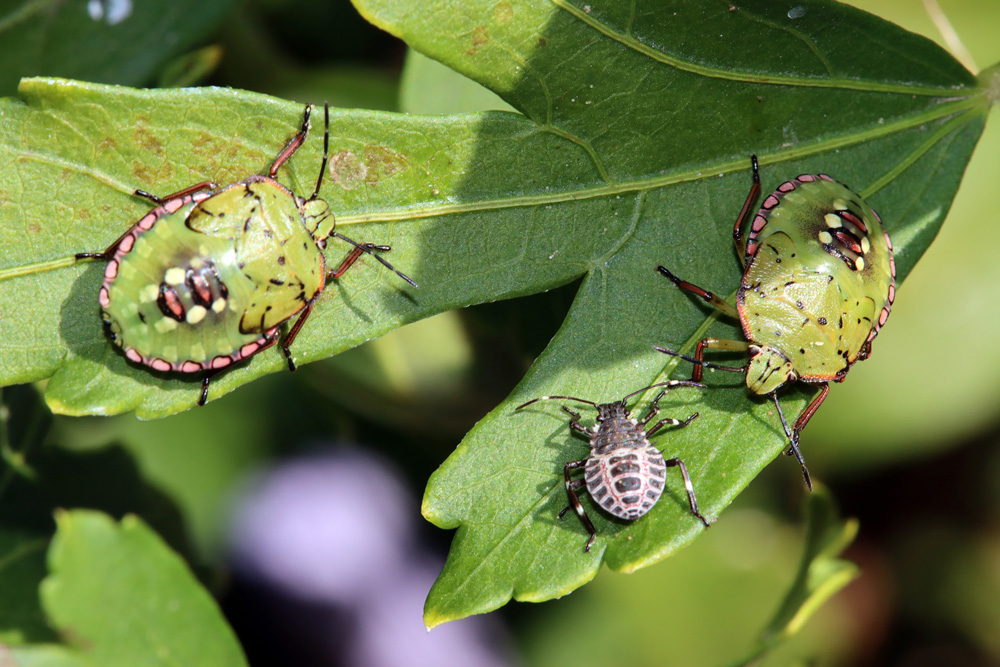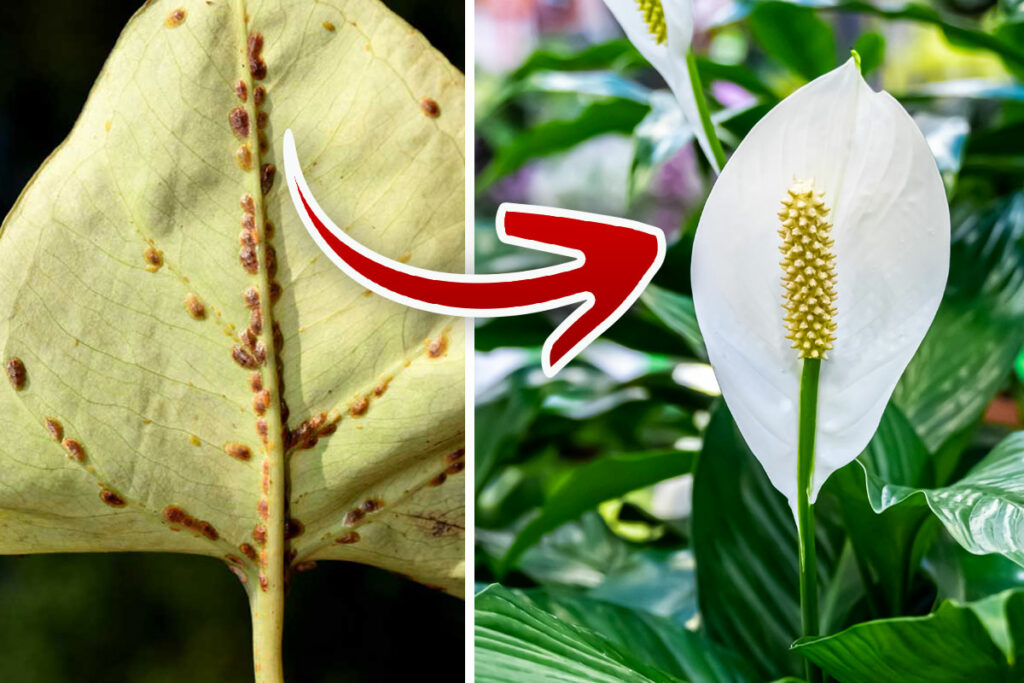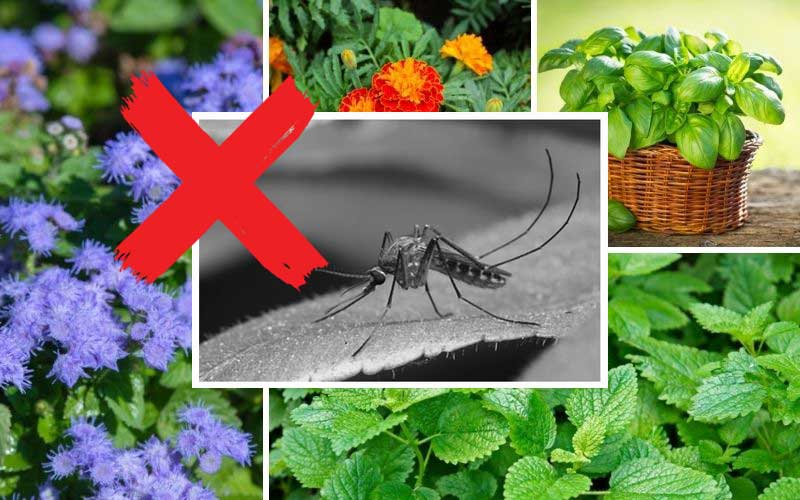
As the summer heat lingers and your garden bursts with life, it’s not just the plants that are thriving.
Late summer brings a host of uninvited guests eager to feast on your carefully tended vegetables and flowers.
Don’t let these tiny terrors ruin your harvest! Let’s explore the top 10 pests you might encounter and learn how to keep your garden healthy and productive.
1. Aphids

These tiny troublemakers are the bane of many gardeners. Aphids come in various colors, from pale yellow to deep black. They’re small but mighty, using their piercing mouthparts to suck the sap from your plants.
You might spot them clustered on new growth or the undersides of leaves. Their damage can cause distorted leaves, stunted growth, and even transmit plant viruses. Keep an eye out for sticky residue on leaves or black sooty mold – telltale signs of an aphid infestation.
2. Caterpillars

While butterflies are welcome visitors, their larvae can wreak havoc in your garden. Caterpillars come in many shapes and sizes, often blending in with their surroundings. These hungry creatures can munch through leaves at an alarming rate.
Some species, like tomato hornworms, can strip a plant bare overnight. Watch for chewed leaves, droppings on leaves (frass), or the caterpillars themselves hiding along stems or under leaves. Early detection is key to preventing widespread damage to your plants.
3. Japanese Beetles

With their metallic green bodies and copper-colored wings, Japanese beetles might look pretty, but don’t be fooled. These voracious eaters can skeletonize leaves, leaving behind only the veins. They’re particularly fond of roses, grapes, and many fruit trees.
Japanese beetles often feed in groups, so infestations can quickly get out of hand. Look for lacy, see-through leaves and clusters of beetles on your plants. Their damage not only affects plant health but can also make fruits and vegetables unappetizing.
4. Cucumber Beetles

Don’t let their name fool you – cucumber beetles don’t limit themselves to cucumbers. These striped or spotted pests have a taste for many garden favorites, including melons, squash, and beans. They chew holes in leaves and flowers, but their real danger lies in disease transmission.
Cucumber beetles can spread bacterial wilt, a deadly disease for cucurbits. Keep an eye out for yellowing leaves, wilting plants, or the beetles themselves scurrying around your vegetable patch. Early intervention can save your harvest from these persistent pests.
5. Ants

While ants aren’t typically direct plant pests, they can cause indirect problems in your garden. These industrious insects often “farm” other pests like aphids, protecting them from predators in exchange for the sweet honeydew they produce.
Large ant colonies near your plants might indicate other pest problems. Additionally, some ant species can damage young plants or seedlings as they build their nests. Monitor ant activity around your plants and look for any associated pest infestations.
6. Rodents

Mice, voles, and other small rodents can be a big headache for gardeners. These furry foragers have a taste for seeds, bulbs, and tender young plants. They’re often most active at dawn and dusk, making them tricky to spot.
Look for signs of gnawing on plants, especially at ground level. You might also notice small burrows or tunnels in your garden beds. Rodents can quickly multiply, so addressing the problem early is crucial to protect your garden.
7. Mosquitoes

While mosquitoes don’t damage your plants, they can certainly make gardening an unpleasant experience. These blood-sucking insects are most active during dawn and dusk, prime gardening hours in late summer. They breed in standing water, so eliminating these sources is key.
Check for any areas where water might collect, such as in old pots, birdbaths, or clogged gutters. Not only are mosquitoes a nuisance, but they can also transmit diseases. Protecting yourself while gardening is just as important as protecting your plants.
8. Stink Bugs

These shield-shaped insects get their name from the foul odor they release when threatened. Stink bugs use their piercing mouthparts to feed on a wide variety of plants, including many fruits and vegetables. Their feeding can cause discoloration and deformities in fruits.
Look for clusters of stink bugs on plants, especially on fruit trees and vegetable plants. You might also notice a sweet, almost cilantro-like smell when they’re present in large numbers. Early detection can help prevent significant crop damage.
9. Flea Beetles

Don’t let their small size fool you – flea beetles can cause big problems in your garden. These tiny insects get their name from their ability to jump like fleas when disturbed. They’re particularly damaging to young plants and seedlings.
Flea beetles chew small holes in leaves, giving them a characteristic “shot hole” appearance. While mature plants can often withstand the damage, young plants can be severely stunted or killed. Keep a close eye on your newly planted vegetables, especially members of the cabbage family.
10. Mealybugs

These small, white, cottony insects might look harmless, but they can quickly become a major problem. Mealybugs suck sap from plants, weakening them and causing yellowing leaves, stunted growth, and even plant death in severe cases.
They often hide in hard-to-see areas like leaf axils or under leaves. Look for white, cottony masses on your plants, especially in protected areas. Mealybugs also excrete honeydew, which can lead to sooty mold growth on leaves.
Protecting Your Garden
Now that you’re familiar with these common late summer pests, you’re better equipped to spot and address problems early. Remember, a healthy garden is your best defense against pests. Here are some tips to keep your garden thriving:
- Regular Inspection: Make it a habit to walk through your garden daily, checking plants for signs of pest activity.
- Encourage Beneficial Insects: Attract natural predators like ladybugs, lacewings, and praying mantises to your garden. They’ll help keep pest populations in check.
- Practice Crop Rotation: This helps prevent pest populations from becoming established in your garden.
- Use Physical Barriers: Row covers can protect young plants from many flying insects.
- Maintain Plant Health: Well-watered, properly fertilized plants are more resistant to pest damage.
- Consider Companion Planting: Some plants naturally repel certain pests. For example, marigolds can deter many garden pests.
- Use Organic Pest Control Methods: If needed, consider using insecticidal soaps or neem oil as a first line of defense.
Remember, complete eradication of pests is rarely necessary or desirable. The goal is to maintain a balance that keeps pest damage to a minimum while preserving the overall health of your garden ecosystem.













